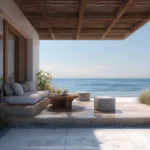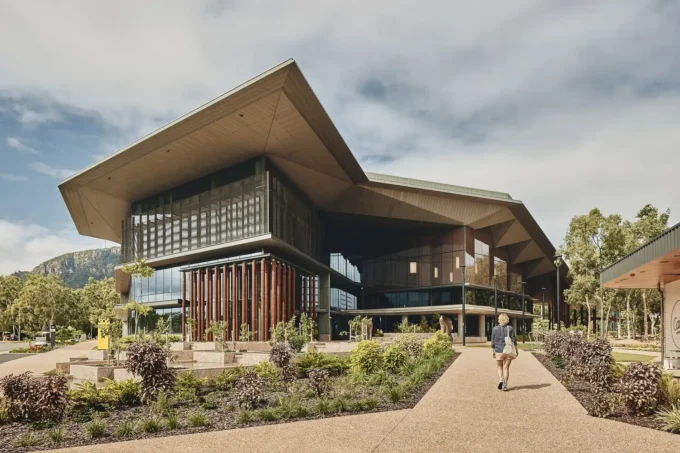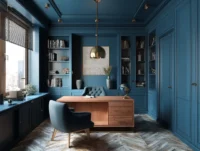Established in 2002, Tongji University’s Jiading Campus has long awaited a vibrant public cultural core to complement its academic and residential zones. The Yijia Building (Students’ Activity Center) by TJAD Atelier L+ fulfills this vital role, acting as a heterogeneous and catalytic landmark designed to invigorate campus life with new spatial experiences distinct from traditional teaching and learning environments.

Strategic Location and Architectural Concept
Positioned at the southeast edge of the campus, Yijia Building sits at the nexus between the teaching and dormitory areas, overlooking a serene lakeside lawn to the southwest. The structure’s massing—comprising two- and nine-story sections—creates a prominent landmark anchoring the east side of the southern entrance axis, thoughtfully balancing the library located opposite on the west side.
The architectural concept revolves around “roaming the vertical campus.” This idea manifests through an interconnected network of ramps, stairs, corridors, and vertical spaces that link the underground levels with the rooftop garden. The spatial flow is continuous and immersive, evoking the experience of a traditional Chinese garden where scenes and spatial atmospheres subtly shift with movement.
Borderless Composite Functional Spaces
Yijia’s interior is designed as a “borderless composite functional space” where teachers and students freely engage in diverse activities—sitting, lying down, chatting, observing, reading, thinking, and acting. This fluid spatial organization dissolves rigid boundaries between functions and encourages spontaneous social and intellectual interaction.
The exterior contrasts this richness with a simple, powerful stone-like volume articulated through modular system control, giving the building a grounded, monumental presence on campus.

Innovative Structural and Seismic Design
The building foundation features an advanced “floating seismic system,” with a two-meter isolation layer between the foundation and the underground first floor, enhancing earthquake resilience. Structural components are optimized with an integrated design philosophy; nearly 40.5% of the building’s structure utilizes a prefabricated concrete ribbed beam and column system. This system is carefully coordinated with lighting, sprinkler, daylighting, and ventilation installations for efficiency and performance.
Upper components are designed with reduced seismic fortification intensity, reflecting a gradient approach to structural design that balances safety and material use.
Ecological and Thermodynamic Integration
Yijia Building embodies a holistic fusion of architecture, structure, and thermodynamics. Its main volumes incorporate a combined atrium and thermodynamic chimney system that promotes vertical airflow, enabling maximum natural ventilation during transitional seasons. The podium’s public atrium features large-scale facade openings and operable top ventilation, enhancing indoor environmental quality and occupant comfort.
This integrated approach contributes to a 7% reduction in carbon emissions over the building’s entire lifecycle—equivalent to the carbon sequestration of planting 250,000 trees on campus.

A Spatial Container of Light, Wind, and Nature
Inside and outside, the building offers a rich spatial texture and natural experience. As occupants move through the spaces, they encounter dynamic plays of light and shadow, gentle breezes flowing through open volumes, and framed views of trees and the lakeside landscape. Yijia thus becomes a “spatial container of light and wind,” deeply connected to its natural surroundings and the cultural life of the campus.
Photography: Shengliang Su
- Borderless functional spaces
- Campus cultural center
- Campus landmark architecture
- Campus landscape integration
- Campus public spaces
- Carbon emission reduction architecture
- Floating seismic system
- Indoor-outdoor spatial flow
- Integrated structural design
- Modular facade system
- Natural Ventilation Architecture
- Prefabricated concrete structure
- Seismic resilient design
- Student activity center design
- Sustainable campus building
- Thermodynamic chimney system
- TJAD Atelier L+
- Tongji University architecture
- Vertical campus concept
- Yijia Building






















































Leave a comment